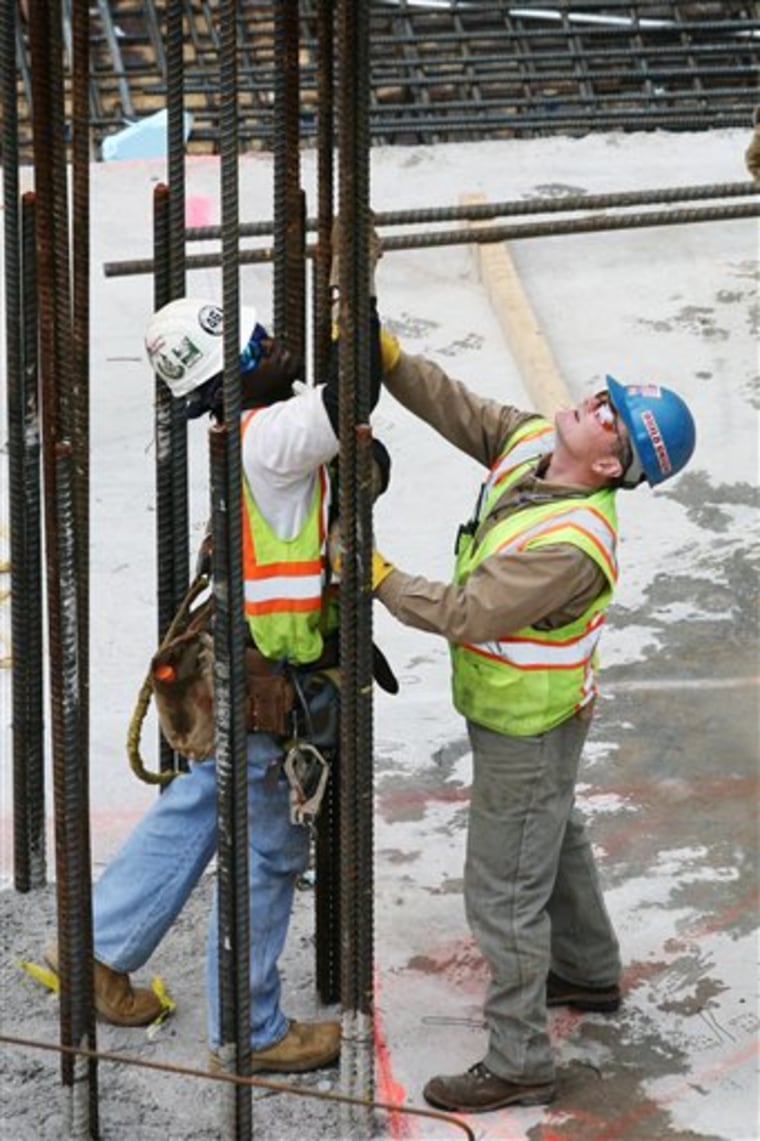Orders for manufactured goods posted a surprisingly strong increase in April as demand rose in a number of areas including heavy machinery, iron and steel.
The Commerce Department reported Tuesday that orders were up 1.1 percent in April following a 1.5 percent increase in March. Those gains followed big declines in January and February that raised concerns about how much pain manufacturing industries would feel from the severe economic slowdown hitting housing and the financial sector.
Orders in the battered auto industry and commercial aircraft sector did fall sharply in April, but other areas showed strength catching analysts by surprise. They had been forecasting that overall orders would edge down slightly in April.
The better-than-expected reading on orders for manufactured goods followed news Monday that a key gauge of manufacturing rose to a reading of 49.6 in May, up from 48.6 in April.
While the Institute for Supply Management’s manufacturing index remained at levels indicating a continued contraction in manufacturing, the upward movement was seen as a possible sign that manufacturing was beginning to stabilize.
On Wall Street, stocks fell sharply for a second straight day on fresh worries about what the credit crisis is doing to the health of the nation’s banks. The Dow Jones industrial average declined 100.97 points to close at 12,402.85.
Manufacturing is being buffeted by a prolonged slump in housing, which has cut into demand for building supplies, and soaring energy prices, which have hurt auto sales. However, these adverse factors are being offset by continued strong demand for U.S. exports, which are more competitive in overseas markets because of the weaker dollar.
Michelle Girard, an analyst at RBS Greenwich Capital, said that one of the hopeful signs in the orders report was that inventories of unsold goods were unchanged in April, indicating that manufacturers are keeping their inventory backlogs under control. A smaller stockpile of goods should reduce the need for production cutbacks that would make the current slowdown worse.
For April, demand for durable goods—items expected to last at least three years—fell by 0.6 percent, slightly larger than the 0.5 percent drop reported last week in a preliminary report. The weakness was led by a 24.4 percent drop in demand for commercial aircraft, a sector that is extremely volatile from month to month, and a 4.2 percent decline in motor vehicles, an industry that is being battered by soaring gasoline prices and the weak economy.
General Motors announced Tuesday that it was closing four truck and SUV plants in the United States, Canada and Mexico as surging fuel prices accelerate the shift to smaller vehicles.
The weakness in autos and airplane orders was offset by strength in a number of other areas. Orders for iron and steel were up by 5.5 percent. Orders for mining and oil field equipment jumped 48.6 percent and orders for electrical equipment and appliances surged 28.1 percent.
Orders for nondurable goods rose by 2.8 percent, led by a big jump in demand for petroleum products, reflecting higher prices. Demand for food and beverages also was up sharply.
While some economists have worried that the country could be in danger of falling into a recession, the government reported last week that the gross domestic product stayed in positive territory in the first three months of this year, growing at an annual rate of 0.9 percent, slightly stronger than the initial estimate. Many economists now believe that the GDP will remain in positive territory during the current April-June quarter, helped by economic stimulus payments being made to 130 million households.
The Federal Reserve started in September aggressively cutting interest rates in an effort to keep the housing slump and a severe credit crunch from triggering a recession. In a speech Tuesday, Fed Chairman Ben Bernanke signaled that the central bank is likely to remain on hold for now, watching both the risks of weaker growth and higher inflation from soaring energy prices.
“For now, policy seems well-positioned to promote moderate growth and price stability over time,” Bernanke said.
